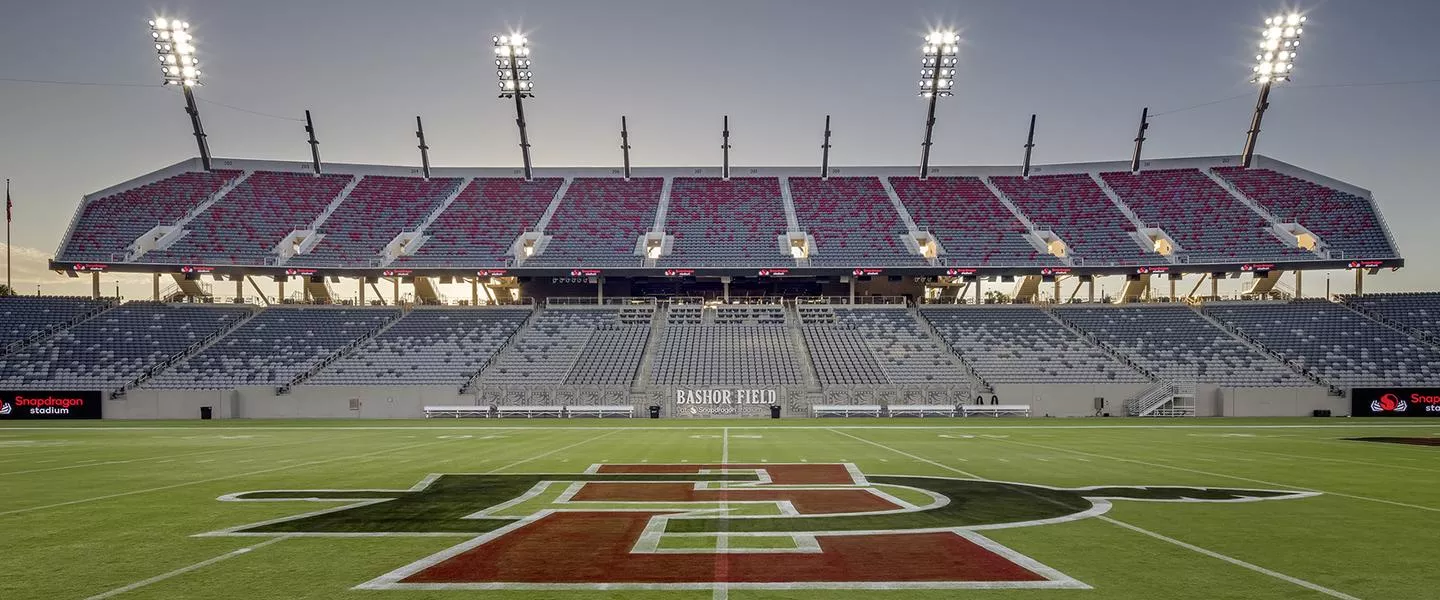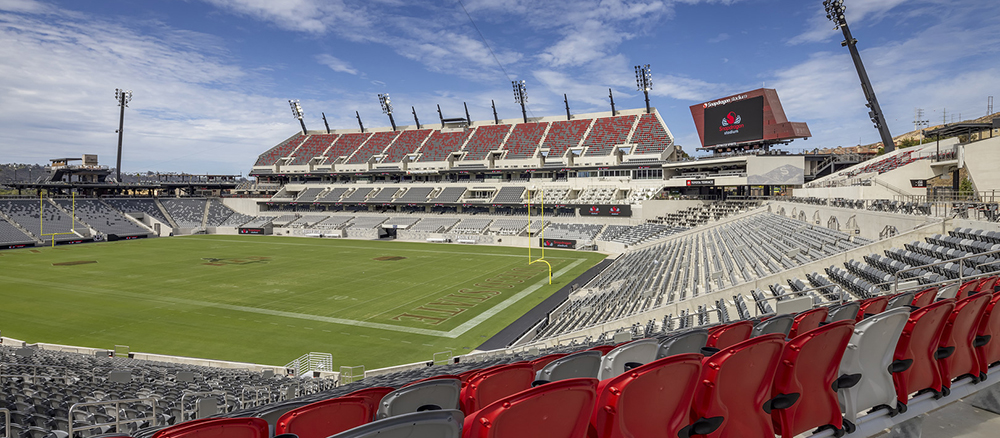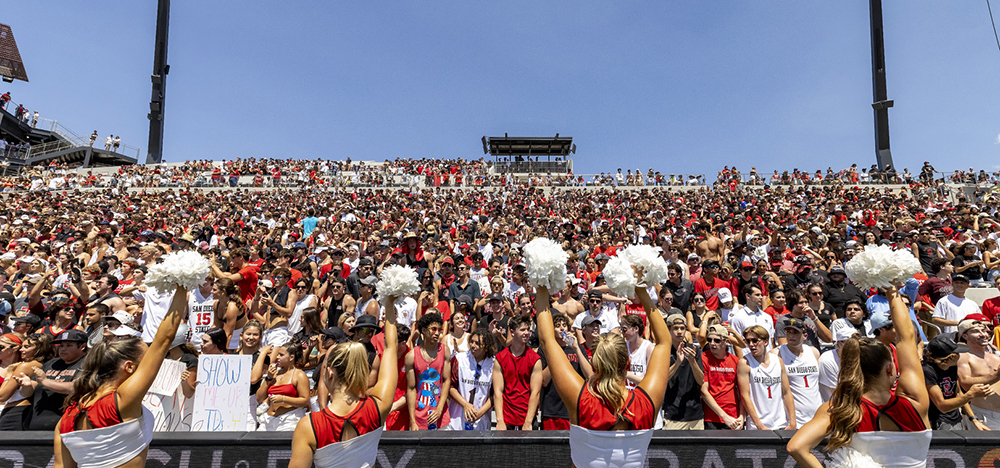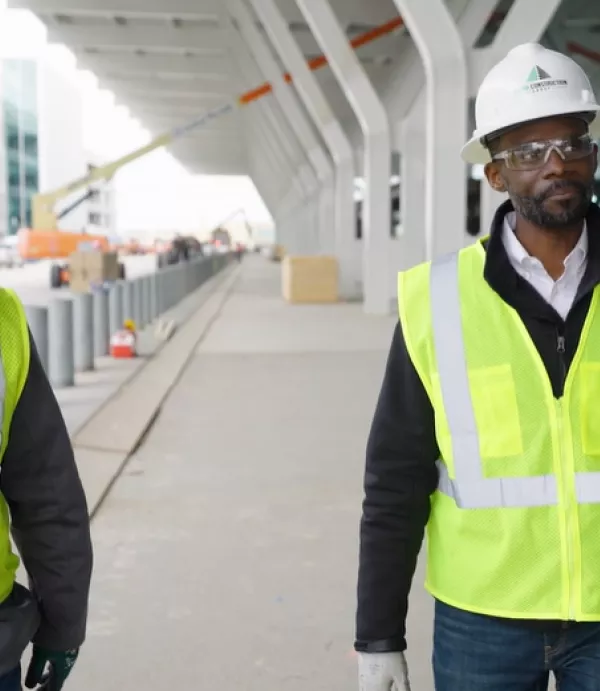Snapdragon Stadium a Touchdown for San Diego
November 21, 2022

This fall’s football home opener for the San Diego State University (SDSU) Aztecs kicked off an exciting new era for the school. The game marked the opening of Snapdragon Stadium – a 35,000-person capacity multi-use venue which, in addition to collegiate football, will host professional and collegiate soccer, NCAA championship games, concerts, and events. The stadium is a part of the first phase of development at SDSU Mission Valley, a mixed-use, medium-density, transit-oriented development that will expand the university’s educational, research, entrepreneurial, and technology programs.
Completion of the stadium is the culmination of Clark’s two-year design-build effort in conjunction with Gensler, the project architect. In just 17 months, the team progressed from schematic design through permitting while working through major design evolutions in response to university and community feedback. Solar panels to reduce energy consumption, a vehicular bridge to create a continuous path for sensitive wildlife, and a floodplain habitat were incorporated into the project through a carefully managed design development effort while keeping the project within budget.
A Complicated Undertaking from the Ground Up
In the field, the team faced one of the project’s biggest challenges before vertical construction could even begin. The development is located within a 100-year floodplain, which required extensive site preparation to raise the ground by as much as 35 feet in some areas, requiring 150,000 cubic yards of dirt infill.
With this massive earthwork effort underway in 2020 at the height of COVID-19 restrictions, the team capitalized on lighter than usual traffic to maintain a steady flow of materials to the project. In total, roughly 40,000 truckloads of dirt were transported to the site, averaging 115 trucks per day and reaching a daily peak of 400.
Image

To oversee work on site, the project team flew drones over the area daily, capturing thousands of photos for analysis. These images of daily conditions were digitally overlaid with finished drawings and topographic views, aiding in the calculation of the volume of dirt infill still needed throughout the site. That data was connected to delivery schedules so the team could more accurately track progress against the project’s overall timeline.
With construction of the new stadium well underway, a looming challenge remained – demolition of the adjacent Qualcomm Stadium. Under the project’s original plan, the old stadium would remain operational while work on the new stadium progressed, until being imploded at the end of the 2020 football season. When COVID-19 cancelled plans to play the 2020 season at Qualcomm, the construction team shifted from the implosion plan to conventional demolition, a safer alternative that would ultimately save two months from the schedule and reduce cost.
As the site took its final shape, crews poured 30,000 cubic yards of concrete to support the 2,500 steel beams which comprise the stadium’s structure. The team began construction on the most complex portion of the stadium – the premium seating spaces – and worked in a clockwise direction to complete the remaining structure. In July 2021, ironworkers set the last of the venue’s 2,500 steel beams atop the stadium’s scoreboard, topping out the project on schedule.
Throughout the project, the design-build team led a high-performing group of more than 250 firms, including engineers and trade contractors. On average, 300 craft workers – representing 15 different trade contractors – worked on site daily and collectively put in place nearly $8 million in work each month. In aggregate, local firms were awarded $250 million in construction contracts, including 35 San Diego-based businesses. Additionally, six percent of contracts were awarded to certified veteran-owned companies.
Image

Snapdragon Stadium is the latest project completed as a result of a 15-year partnership between Clark and San Diego State University, which also includes construction of the MTS Green Line Trolley Station and Tunnel and Engineering and Interdisciplinary Sciences Complex on campus.


